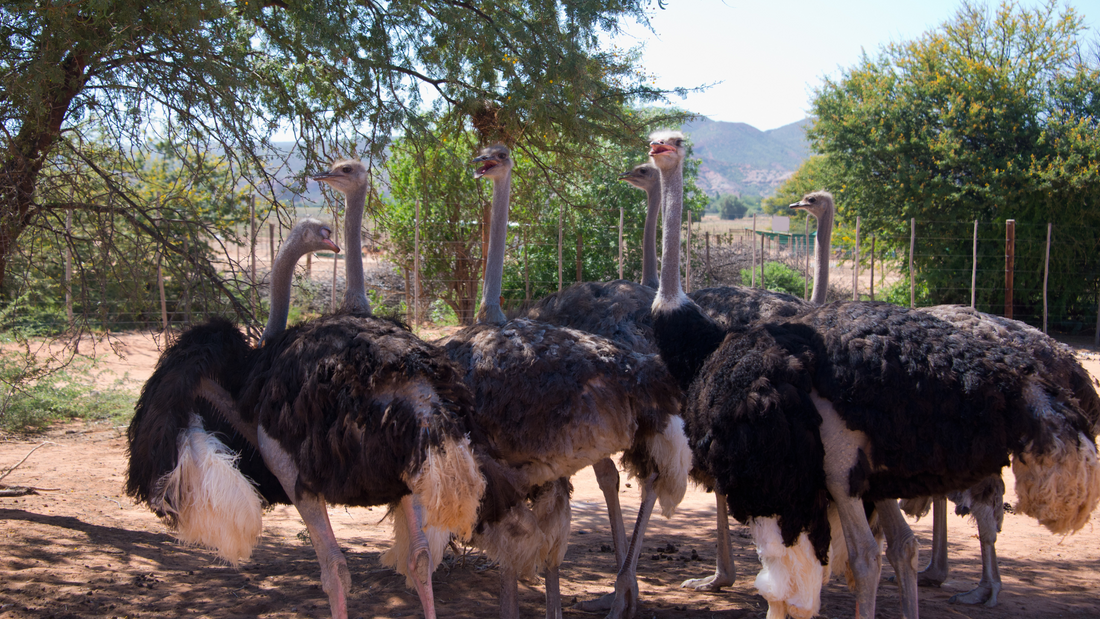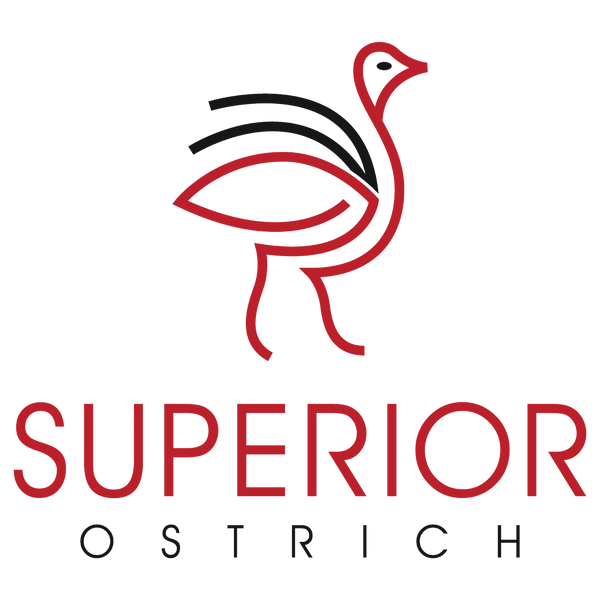
The Power of Genetic Diversification in Ostrich Farming
Share
Over time, we have found that diversifying the genetic pool in reproducing ostriches offers several significant long term benefits. Our premium genetics is the foundation of our success in ostrich farming at Superior Ostrich. Here are the 6 value-driving points of genetic diversification that we will address:
- Increased genetic variation
- Improved health and vigor
- Enhanced adaptability
- Reduced genetic disorders
- Improved production traits
- Preservation of genetic resources
Increased Genetic Variation
Introducing new genetic material through diversification helps increase the overall genetic variation within the ostrich population. Genetic diversity is crucial for the long-term survival and adaptability of a species. It provides a larger pool of genetic traits, which can enhance disease resistance, reproductive success, and overall fitness. We've proven this to be true with our flock in Texas. Our reproductive metrics increased substantially as once we introduced genetic variation.
Improved Health and Vigor
A diverse genetic pool helps minimize the risk of inbreeding and the associated problems of reduced fertility, susceptibility to diseases, and weakened immune systems. Genetic diversification contributes to healthier offspring with enhanced vigor, vitality, and overall well-being. Superior Ostrich has taken a scientific approach to studying our chicks year over year to measure health markers in order to prove this theory. It is clear that diversifying the genetic gene pool of our breeders has enhanced increased fertility rates in our hens, improved our chicks immune systems in the critical early weeks, and reduced disease outbreaks across the farm.
Enhanced Adaptability
Genetic diversity allows ostriches to adapt to changing environmental conditions and challenges. Variations in genetic traits provide a wider range of responses to environmental stressors, such as diseases, climate variations, or changes in food availability. This adaptability increases the chances of survival and successful reproduction in different environments. In central Texas we have a variety of extreme weather conditions. From blazing hot summers, to high humidity and rainfall, to cold and sometimes icy winters. Our flock has proven strong as a whole in light of these environmental stressors, and we credit this to our premium genetics.
Reduced Genetic Disorders
Inbreeding can lead to the expression of recessive genetic disorders or undesirable traits. By diversifying the genetic pool, the likelihood of such disorders is reduced, as the chances of mating between individuals carrying the same harmful genetic variants are diminished. This promotes overall population health and reduces the occurrence of inherited diseases. This is a very scientific approach to animal husbandry that we have adopted at Superior Ostrich. We have seen successes in following this theory.
Improved Production Traits
Genetic diversity allows for the selection of individuals with desirable traits in terms of growth rates, meat quality, egg production, or feather characteristics. By introducing new genetic material, breeders can tap into a wider range of desirable traits and work towards improving specific production traits in the ostrich population. As mentioned in our article describing the different species and their associated economic values, we have integrated the different species to offer more desirable byproducts including meat, eggs, leather, feathers, and oil.
Preservation of Genetic Resources
Genetic diversification is crucial for preserving the genetic resources of the ostrich species. By maintaining a diverse genetic pool, breeders contribute to the long-term preservation and conservation of the ostrich genetic heritage. This is particularly important considering the potential threats to genetic diversity from habitat loss, climate change, or other factors. This is especially prevalent here in the US where the ostrich is not native. Our goal at Superior Ostrich is to preserve and cultivate the continuance of ostrich as a species within our continent.
Concluding Thoughts
It's worth noting that careful breeding programs, genetic management, and the exchange of genetic material between different breeding populations are essential to achieve effective genetic diversification while ensuring the maintenance of desired traits and breed standards. Contact us today for any questions or interest you have in our operation.
